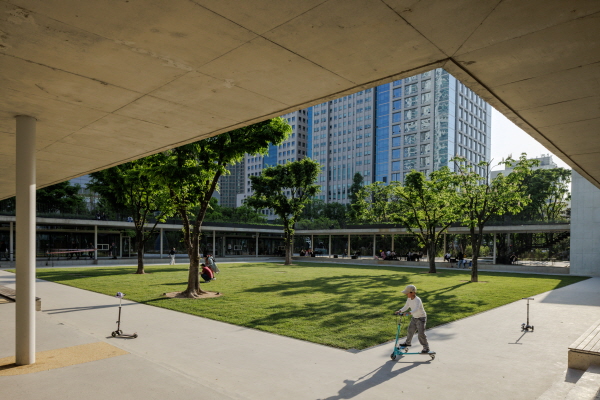SPACE November 2025 (No. 696)
On the 4th of September, the Ministry of Culture, Sports and Tourism and Korea Craft & Design Foundation announced Seocho-gu Office’s public initiative ‘New Design and Technologies Solutions for Smoker-Non-Smoker Coexistence’ as the winner of the Presidential Award in the 2025 Korea Public Design Awards. Aside from this, a range of designs that promote effective coexistence and harmony across diverse spaces with physical and psychological challenges were nominated. Under the theme ‘Coexistence: Public Design for the Future’, the awards reflect on works that mediate conflict and confront issues within our changing society while also emphasising the creation of inclusive environments and cultural values for everyone. The notion of ‘publicness’ to which many aspire is under examination in this article and will be the subject of its line of questioning.
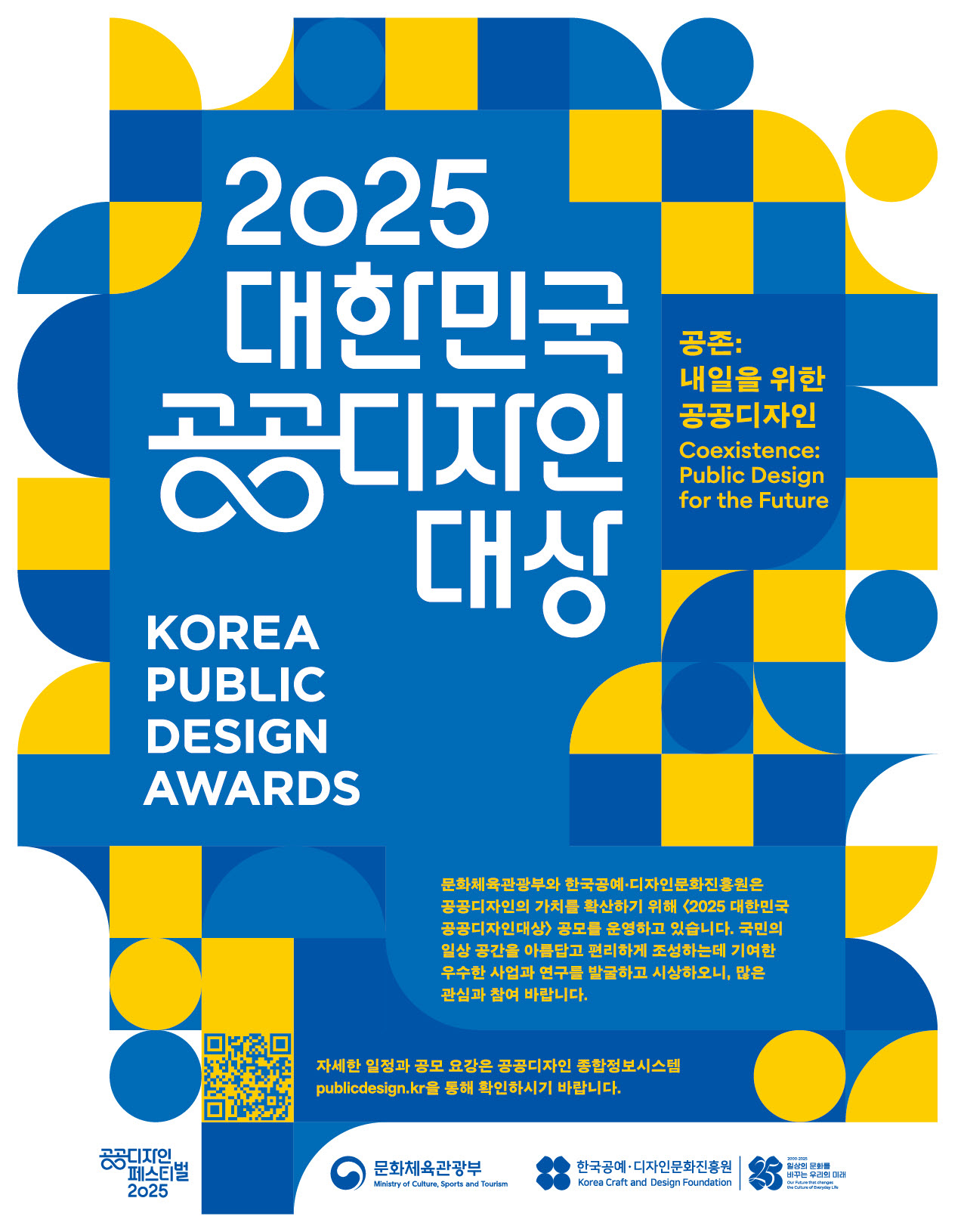
Non-Smoker Coexistence’ by Seocho-gu

Presidential Award: Open-type smoke ventilation smoking facility of the public service project ‘New Design and Technologies Solutions for Smoker- Non-Smoker Coexistence’ by Seocho-gu Office. Image courtesy of Seocho-gu Office
A Practical Methodology for the Wider Public
When did public design begin? While Korea experienced a radical rate of development along with rapid economic growth led by the government and corporations, awareness regarding the importance of public design took root much later. The term public design, which was first used in the exhibition ‘de-sign Korea: Imagining the Publicness of Design’ held at the Hangaram Design Museum in 2001, supported by and its accompanying symposium, started to be used and practiced in the public sphere only after the Spatial Culture Division was established within the Ministry of Culture and Tourism (MCT) in 2005.▼1 In other words, the term ‘public design’ first emerged from the practical need to conceptualise the kind of designs that have direct impact on various spheres of life. Twenty years after the term ‘public design’ was newly established in Korea in 2005, achievements in public design have accumulated via numerous policies, projects, and research, and the concept of public design today – that is, design intended to make our lives more beneficial and advantageous – is now broadly conceived as pro-public design that encompasses public services, architecture, campaigns, and culture in both tangible and intangible forms. Public design has also been implemented and encouraged through the policies and projects of various government agencies. In this way, while the term ‘public design’ might have originally emerged out of practical necessity, it has now grown into an independent force that self-initiates discussion and interest and influences policymaking and institutional decisions. To empower the cultural role and improve awareness of public design (and thereby find ways to improve living standards) the Ministry of Culture, Sports and Tourism (MCST) and the Korea Craft & Design Foundation (KCDF) have been active in discovering and presenting exemplary instances of public design since 2008 through the Korea Public Design Awards to suggest the future directions of public design. In 2025, what kind of design does our society need? The competition theme for this year was ‘Coexistence: Public Design for the Future’. By reviewing the winning entries of the 2025 Korea Public Design Awards, we will examine the difficulties that experts across various fields have identified in terms of responding to social change, intergenerational harmony, and coexistence, and the public design strategies that were implemented to solve them. These tangible and intangible designs permeate and shape the everyday lives of the Korean people.

Scene of users utilising the open-type smoke ventilation smoking facility. Image courtesy of Seocho-gu Office
Solutions in the Community: Shaping Quality of Life Through Public Service Design
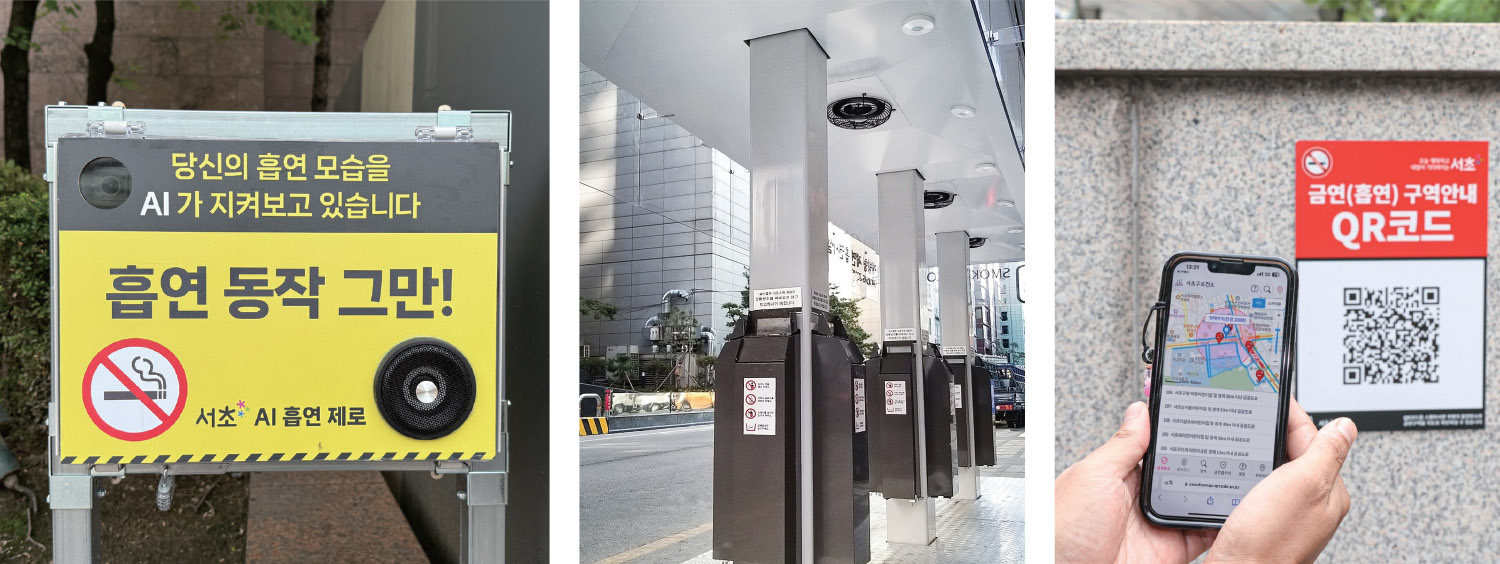
(from left to right) ‘New Design and Technologies Solutions for Smoker- Non-Smoker Coexistence’s AI smoking motion recognition information board, interior of the open-type smoking facility, and QR information board for non-smoking (smoking) zones. Images courtesy of Seocho-gu Office
Additionally, openair smoking facilities that eliminate odours and smoke – which are the primary causes of complaint – were developed and built. The air curtain-type open smoking booths can accommodate up to 20 people. They separate smokers from non-smokers while providing a comfortable smoking space for smokers. Currently, three of these open smoke-free smoking facilities – the first of their kind nationwide – are operating in the area around Seocho-daero 78-gil, which is an alley off Gangnam-daero known for its high concentration of smokers. Prior to establishing these open-air, smoke-free facilities for improved coexistence, Seocho-gu Office conducted comprehensive research: to diagnose the smoking situation and secondhand smoke exposure at the alleys of Gangnam-daero, the area was divided into commercial / entertainment zones and business zones, and key issues concerning smoking spots, smokers’ behavioural patterns, smoking radius, and movement routes were analysed thoroughly and contextually. Overseas case studies were also investigated. From this research, Seocho-gu Office developed a first-generation model of the smoking facility in the second half of 2023. This was installed as a test model near Banpo Shopping Town, and its effectiveness was verified through observational studies and surveys. In 2024, a joint study conducted by the Korea Center for Tobacco Control Research and Education (KCTCRE) and Institute for Environmental Research, Yonsei University measured its air quality for ultrafine particulate matter and nicotine concentration and confirmed its smoke-blocking effectiveness while also identifying the need to install air curtains for more reliable blocking and additional ashtrays. Based on this feedback, Seocho-gu Office developed a second model. The second model was designed with over 50% open structure in accordance with the recommendations of the World Health Organization (WHO) Framework Convention on Tobacco Control. This design eliminated entry barriers into the smoking booths and created a more pleasant environment for smokers. Supported by three pillars holding up the roof, it can accommodate up to 20 people. Four smoke extraction purification devices use a patented vortex vacuum generation technology that can secure an intake area of about 30 to 40 times greater than the capabilities of conventional fans, while the new threesided air curtains further enhance smoke containment. Twelve ashtrays with self-extinguishing features were also newly installed to the pillars, and the structure was modularised to allow adaptation for various environments like alleyways, plazas, and booths. Seocho-gu Office announced plans to continuously upgrade the facilities through ongoing monitoring and analysis and to gradually expand their numbers. This public initiative does not merely ‘prevent people from smoking’, rather, it separates the living spaces of smokers and non-smokers and cultivates mutual respect. Furthermore, the fact that this initiative underwent gradual improvements through site research, academic studies, and design experimentation is also very significant. This example shows how bureaucracy can, by being grounded in scientific validation and citizen feedback, kickstart a public initiative that is more than just a quick temporary fix. Balancing the needs of smokers and non-smokers remains an ongoing challenge requiring constant adjustment. Nevertheless, Seocho-gu Office’s approach, which seeks resolution within the framework of mutual understanding and coexistence rather than merely suppressing the conflict, offers us a refreshing perspective on how we can tackle the various social conflicts experienced today.
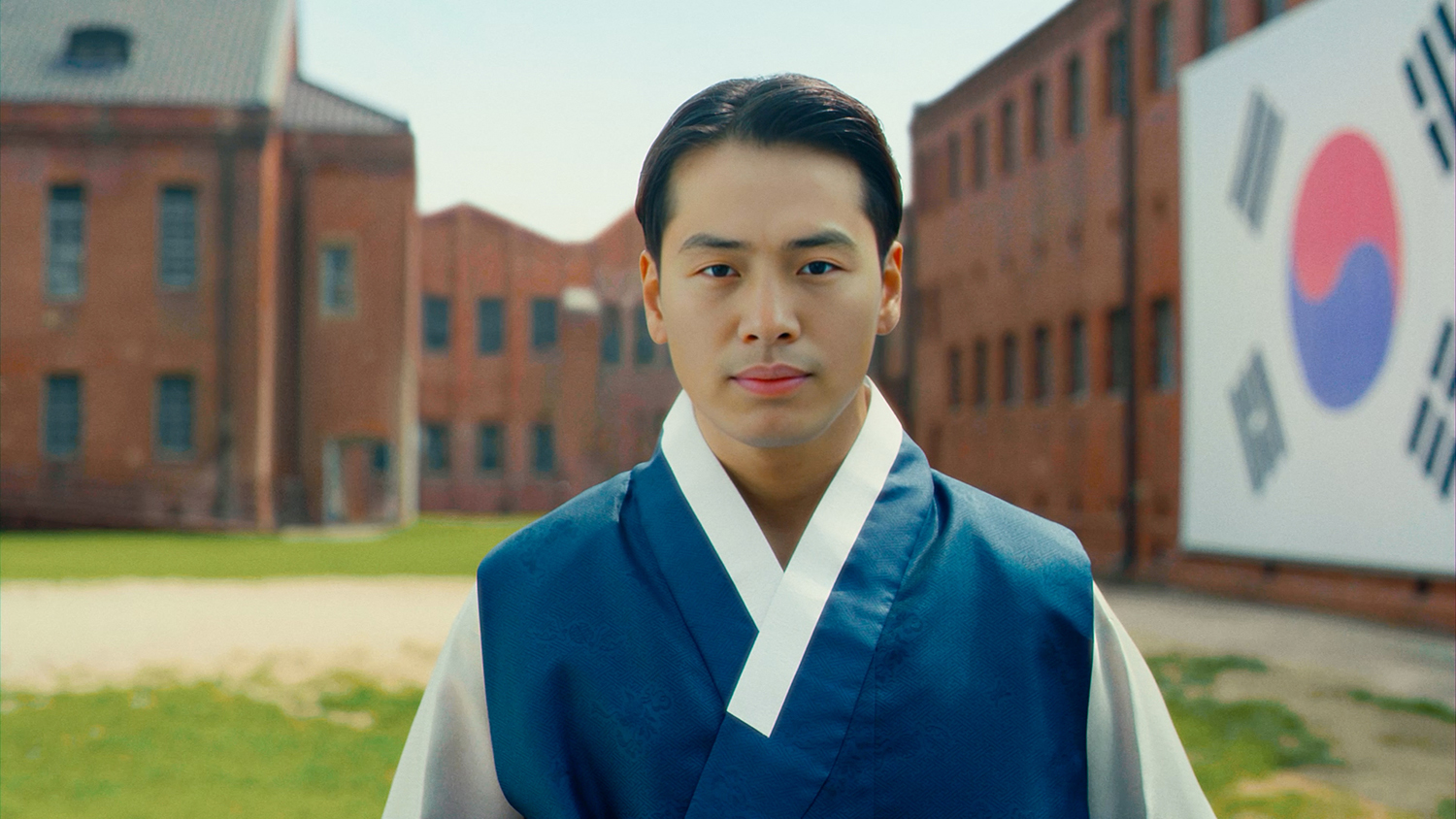
Minister of Culture, Sports and Tourism Award: Public campaign ‘Dress to Remember’ by Ministry of Patriots and Veterans Affairs, Binggrae, and Dminusone. The AI-restored image of poet Yi Yuksa from campaign . Image courtesy of Ministry of Patriots and Veterans Affairs, Binggrae, Dminusone
Technology that Layers New Possibilities Over the Scars of the Past
‘Dress to Remember’ is a public campaign launched in 2024 for the 79th anniversary of Gwangbok Liberation Day through a collaboration between the Ministry of Patriots and Veterans Affairs (MPVA), Binggrae, and Dminusone. This campaign, conceived as a project to restore and honour the final images of independence activists who died for their country before experiencing liberation (光復, gwangbok), used AI technology to edit their final photographs in their burial shrouds. In this symbolic project and through AI, the final images were restored and they were dressed in the ‘clothes of light’ (光服, gwangbok). The portraits of independence activists from the Japanese colonial period, whose faces bear somber expressions and the clear traces of hardship, were transformed via AI into portraits with bright expressions enhanced by their radiant hanboks. This project focused on 87 independence activists recorded as having died in prison by the MPVA’s Gonghun Digital Archive, and where their last images in their prison robes can be found, as captured on Japan’s surveillance cards of independence heroes. Among these heroes are well-known individuals like Yu Gwan-sun, Ahn Junggeun, Ahn Changho, and Yi Yuksa. Master hanbok designer Kim Hyesoon was tasked to design the hanboks, and the actual hanboks were delivered to six surviving patriots (five in Korea, one overseas). The restored photographs were also framed and passed on to their living descendants and registered in the MPVA’s Gonghun Digital Archive. The ‘Dress to Remember’ campaign centred around an online photo exhibition featuring 87 independence activists in hanboks and also featured a documentary video that reenacted via AI the scenes and cheers that would have echoed across the nation during the August 1945 liberation by using data from various historical materials and testimonies. This campaign was broadcast across various media outlets including outdoor ads, social media, TV commercials, and print ads. AI has now become a universal tool accessible to anyone. While concerns about AI misuse exist, AI is still fundamentally only a tool, and its value depends on how it is used. As something that would have been impossible without AI, the ‘Dress to Remember’ campaign demonstrates how technology can contribute to broader public and cultural values. It shows how technology can be used for the public good and how we may seek better ways to coexist in the face of an overwhelming wave of technological advancement.
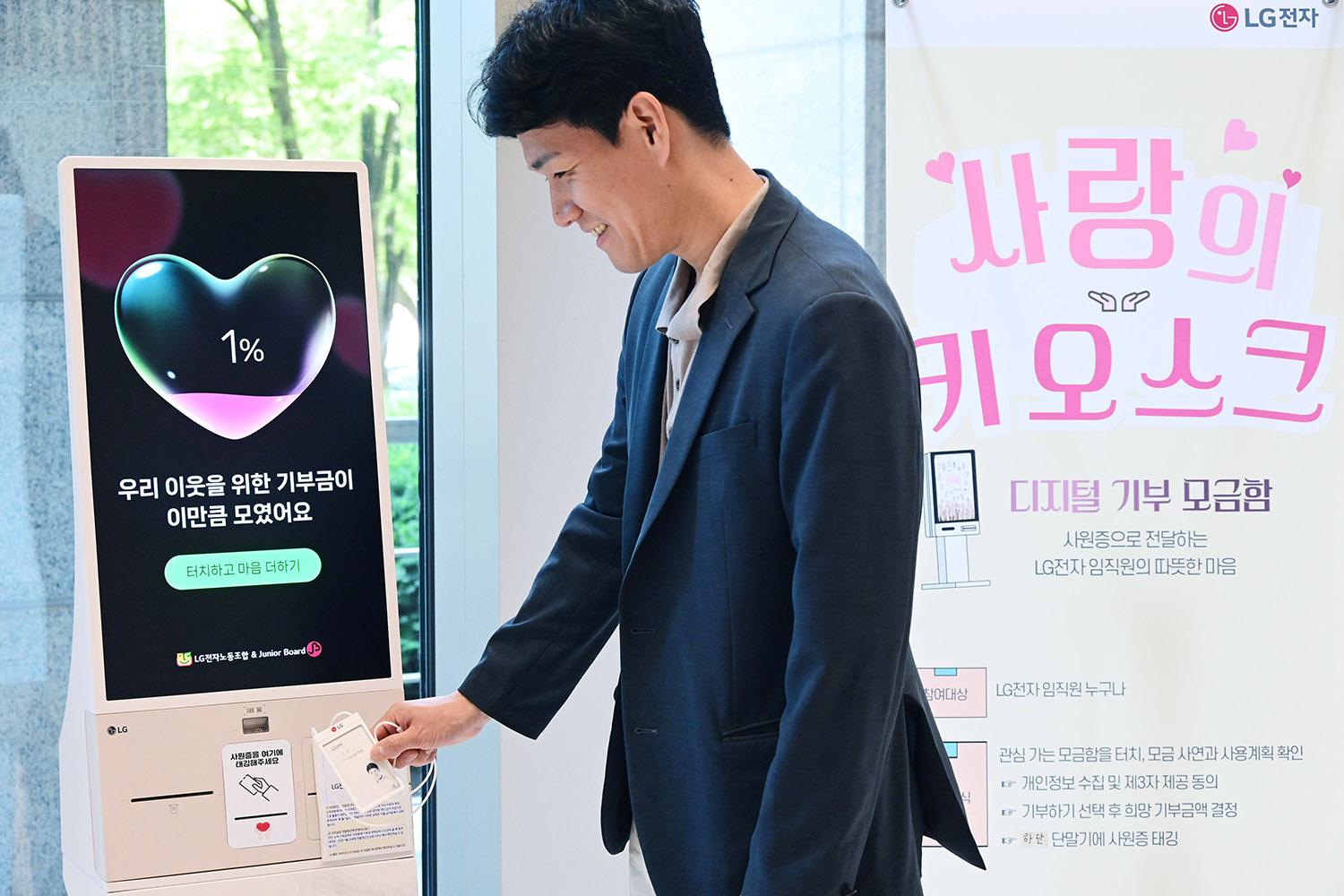
Minister of Culture, Sports and Tourism Award: ‘Transparent OLED Donation Kiosk: Voluntary Sharing Culture Campaign’ by NAVER Happybean. Image courtesy of Happybean Foundation
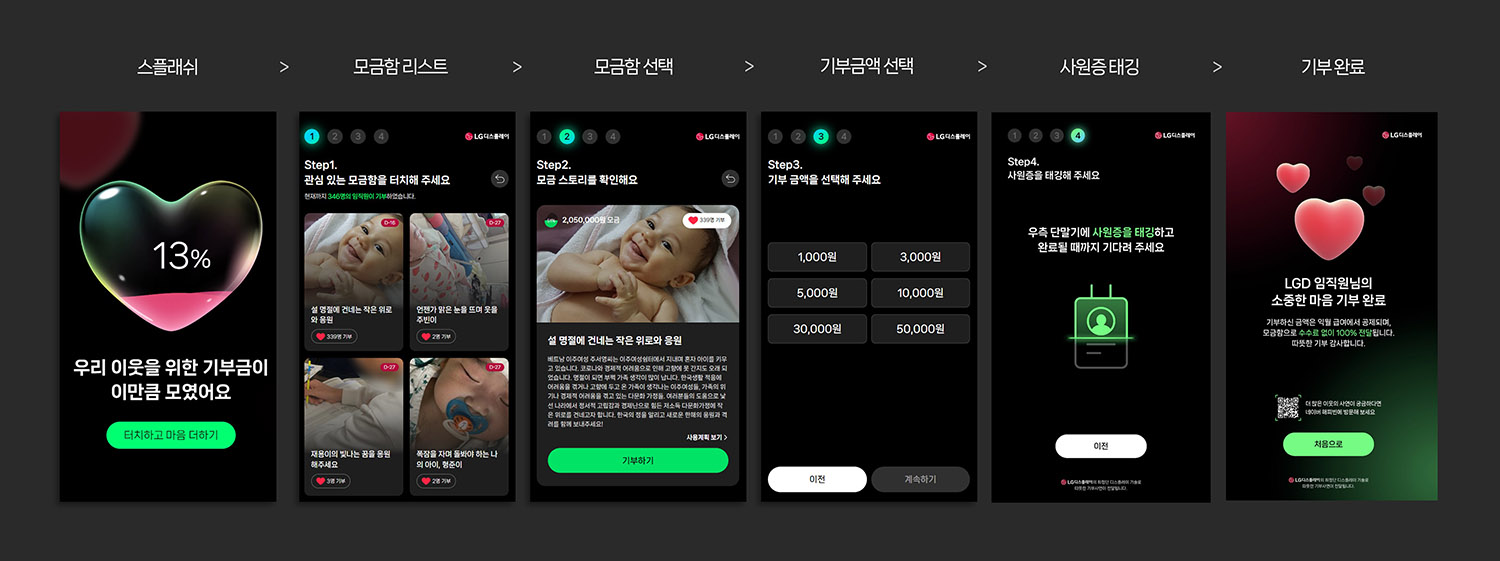
Donation kiosk participation process by NAVER Happybean. Image courtesy of Happybean Foundation
Designing the Sharing Experience
The ‘Transparent OLED Donation Kiosk Voluntary Sharing Culture Campaign’ is a privately initiated public service campaign conducted by NAVER Happybean since 2023. Since its establishment in 2005, NAVER Happybean, which is Korea’s first online donation platform in 2005, has sought to make it easy for anyone to donate and contribute to social value. Online donations have now become commonplace with avenues to participate spreading into various platforms. However, compared to other countries, Korea’s donation participation rate remains low. Analyses from the CAF World Giving Index and various statistical data confirm that Korea lags behind in both donation participation rate and donation amount in terms of its GDP. Tracing the problem source to the limited points of contact for the public to participate in donation in daily life, NAVER Happybean planned and installed donation kiosks within living spheres. These kiosks are currently installed and operate in the headquarters of partner companies. These donation kiosks function as physical and emotional points of contact within people’s everyday working contexts. Also, to reduce barriers for employee donors, the donation procedure was streamlined into a simple act of tapping one’s employee ID card, circumventing relatively complex procedures that require login and authentication. As the information source for charitable projects related to issues and communities local to where their company buildings are located, and by being a visible mode of delivery for donations, NAVER Happybean campaign has established a community-based sharing business structure. Its intuitive touch display interface also makes it easy for anyone to use. These efforts have led to about 350 million KRW in donations as of the first quarter of 2025. NAVER Happybean’s donation kiosk is an example of public design that ties private-sector initiatives with public value in everyday life. The project’s significance, however, lies not in its kiosks or its easy-to-use interface. Rather, its value lies in the fact that it designed the act of ‘donating’ itself. Due to hectic routines, many in modern society easily become desensitised and lose awareness regarding problems in their own neighbourhoods, let alone comprehend crises occurring on a global scale. The donation kiosks in turn instill awareness regarding the value of giving through its physical presence and help to connect people in various places of need.

KCDF President Award: ‘All-Season Anti-Slip Carbon Heated Stair Mat’ Installation by Seongnam City. Image courtesy of Seongnam City
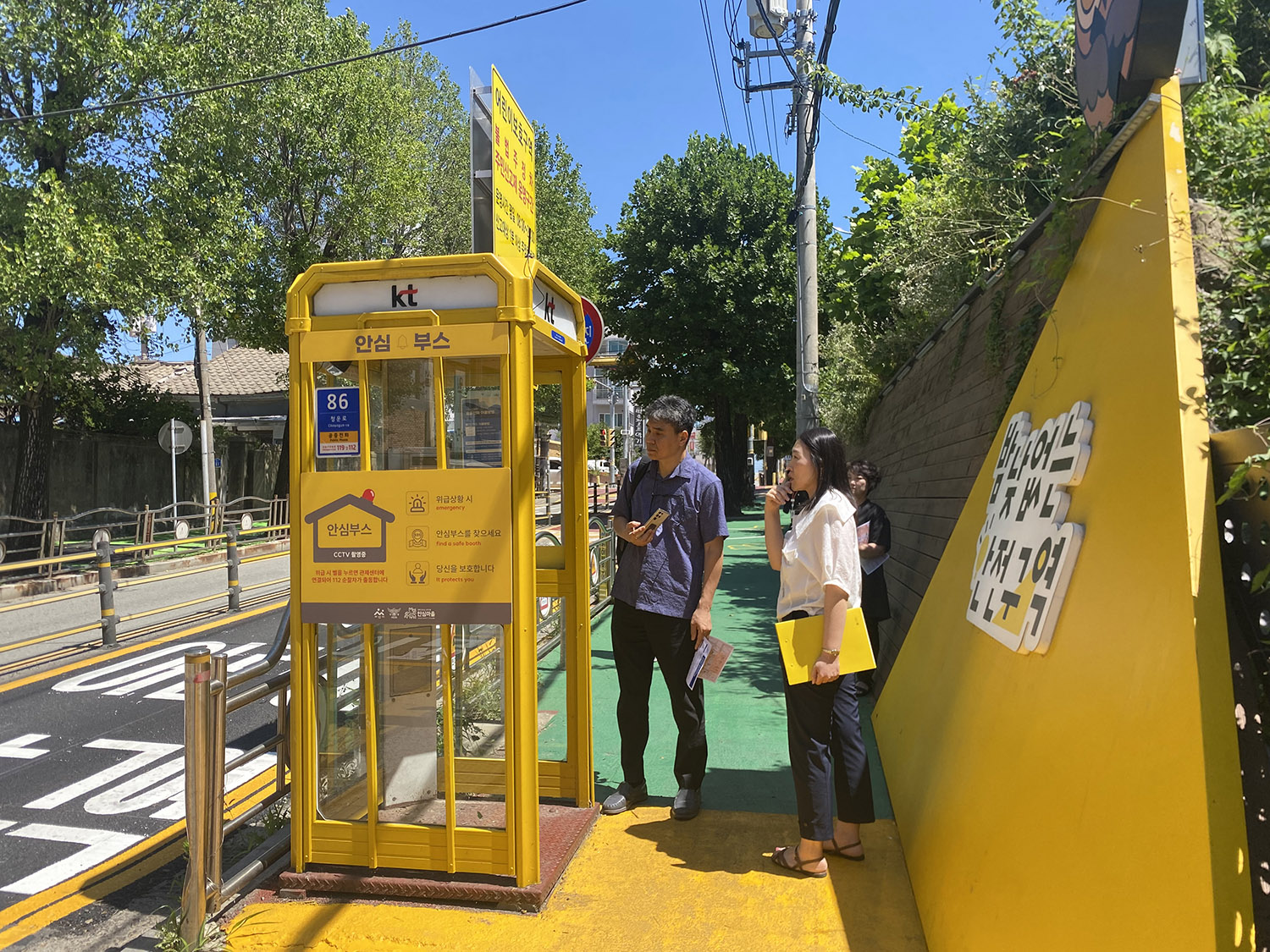
Yellow Carpet Zone from ‘Crime Prevention Environmental Design Development for Onyang Hot Spring Old Downtown Street’ by Asan City. Image courtesy of Asan-si
Rethinking the Environment Through Design and an Inclusive Attitude
The four recipients of the KCDF President Award are all projects that reorganise existing environments through design while adopting an inclusive attitude. For example, Seongnam City’s ‘All-Season Anti-Slip Carbon Fiber Heating Mat Stair Installation’ is the implementation of a design that reflects the demands of local residents to renovate a deteriorated stairwell where accidents involving the elderly and infirm kept occurring. In this project, the irregularly steep and old stairs were renovated by installing carbon heating mats with built-in non-slip functionality and handrails at stair sections, where freezing was common during heavy winter snowfall. Additionally, the entire alley section, including its four staircases, was repaved with anti-slip material to prevent ice and accidents. To enhance visibility, floor graphics featuring visual motifs inspired by ginkgo leaves and the alley’s form were also applied. As another example, Asan City addressed issues within its old downtown area through the ‘Crime Prevention Environmental Design Development for Onyangoncheon Downtown Street’. It reorganised the Onyangoncheon Downtown Street, which was once congested with entertainment establishments and food stalls despite its status as a symbolic local space, into a pedestrian-centred street. It also developed and applied a character based on the Eurasian eagle-owl as a symbolic icon throughout the public space as a form of crime prevention and to strengthen the city’s identity. Additionally, a consistent design language informed by gobo lighting, pavement markings, directional signs, safety mirrors, landscape lighting, safety booths, and ‘Yellow Carpet Zone’ to promote a safer commute for school children was introduced throughout the downtown area. This strengthened the city’s identity and helped to establish a safe and pleasant urban environment. Meanwhile, Ulsan Metropolitan City’s ‘The Aesthetics of Waiting, Ulsan Smart Bus Stop 31109’ project designed spaces to improve bus stop congestion and public transportation safety by providing safe vehicle access to nighttime stops. These smart bus stops not only transformed the urban landscape with a design inspired by Ulsan’s symbolic gray whale and the bamboo leaves of Simni Bamboo Grove but also added public amenities like real-time transit information and wireless phone charging facilities to improve local convenience. As another award-winning work, the National Asian Culture Center’s exhibition ‘Crossing the Line: Our Bodies, Embedded with Others’ demonstrates an inclusive attitude. Centred on the theme of crossing boundaries, this exhibition not only acknowledges differences in the ways we exist but also contemplates the kind of attitude that we should adopt towards those different to ourselves so as to promote mutual acceptance in the public sphere. Comprising disability art, interactive art, barrier-free works, and audience participation programmes, this participatory exhibition can be enjoyed by people with disabilities and those without. It considers not only people with disabilities (visual, hearing, developmental, and physical), children, and the elderly, but also people without disabilities. To achieve this, tactile tiles, braille panels, tactile moldings, braille leaflets (tactile picture books), sign language interpretations, audio descriptions, and various experiential programmes such as touch tours were implemented to foster mutual understanding and connection across boundaries. By bringing to the forefront those who, though part of society, have been marginalised or overlooked, the exhibition engaged in design for all. The dictionary definition of ‘public’ refers to ‘that which concerns all members of a nation or society, not just individuals or specific groups’. In that sense, public design can be defined as design that is open to all, open in multiple directions, and contemplates ways of embracing everyone within society. By examining the diverse public designs showcased in this year’s award-winning works, we can contemplate what design for all truly means and how design can broaden the scope of the public sphere.
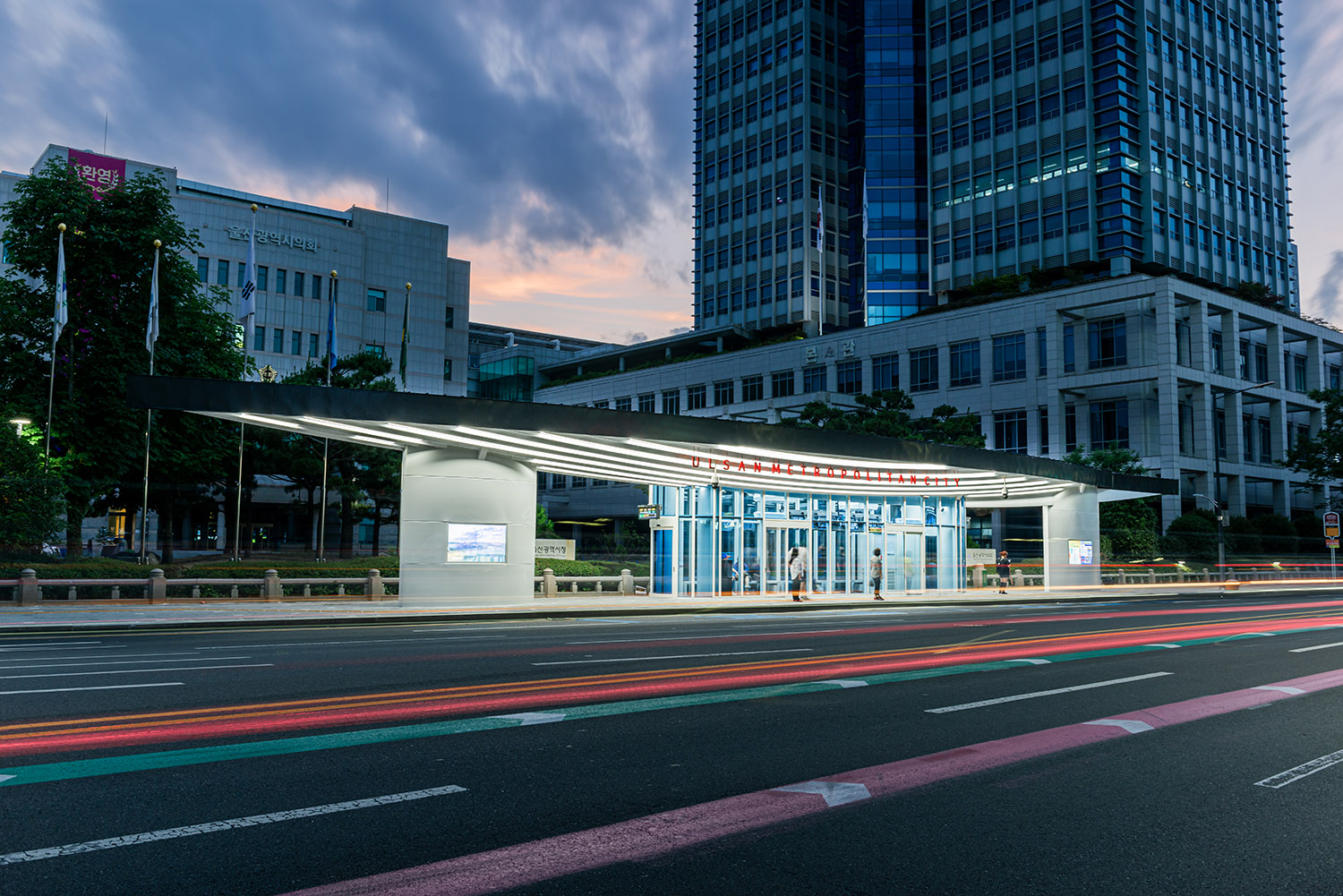
‘The Aesthetics of Waiting: Ulsan Smart Bus Stop 31109’ by Ulsan Metropolitan City. Image courtesy of Ulsan Metropolitan City

‘Exhibition on Enhancing Accessibility at ACC — ‘Crossing the Line: Our Bodies, Embedded with Others’’ by National Asian Culture Center. Image courtesy of National Asian Culture Center
_
1 Changsup, ‘The Emergence of Public Design and Its Popularization’, Koera society of Design Science 126 (May 2018), pp. 171 – 179.






